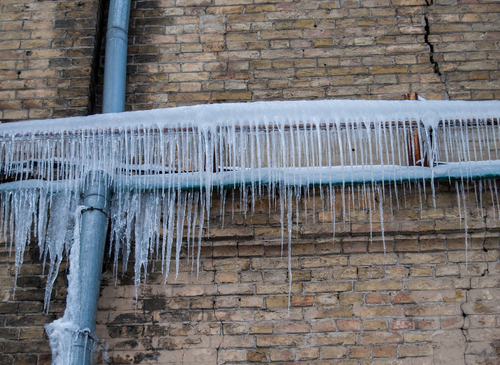How to Protect Your Pipes from Freezing Issues: Important Guidance
How to Protect Your Pipes from Freezing Issues: Important Guidance
Blog Article
They are making a few good pointers about 6 Ways to Prevent Frozen Pipes overall in this great article on the next paragraphs.

Winter can damage your pipes, particularly by freezing pipelines. Right here's just how to avoid it from happening and what to do if it does.
Intro
As temperatures decrease, the threat of frozen pipes rises, potentially bring about costly fixings and water damage. Comprehending just how to prevent frozen pipelines is vital for homeowners in chilly environments.
Avoidance Tips
Insulating susceptible pipelines
Cover pipelines in insulation sleeves or use heat tape to safeguard them from freezing temperature levels. Focus on pipes in unheated or outside locations of the home.
Home heating methods
Maintain indoor rooms adequately heated, especially locations with pipes. Open up cabinet doors to allow warm air to circulate around pipes under sinks.
Just how to recognize icy pipelines
Search for decreased water flow from taps, uncommon odors or sounds from pipes, and visible frost on exposed pipelines.
Long-Term Solutions
Architectural adjustments
Consider rerouting pipelines away from exterior wall surfaces or unheated areas. Include additional insulation to attic rooms, basements, and crawl spaces.
Updating insulation
Purchase premium insulation for pipelines, attics, and walls. Appropriate insulation helps preserve consistent temperature levels and decreases the threat of frozen pipelines.
Securing Exterior Plumbing
Yard tubes and outdoor taps
Disconnect and drain garden hose pipes before winter. Mount frost-proof spigots or cover outside taps with shielded caps.
Comprehending Icy Pipelines
What causes pipes to ice up?
Pipes ice up when revealed to temperatures below 32 ° F (0 ° C) for prolonged durations. As water inside the pipelines ices up, it increases, putting pressure on the pipe walls and potentially causing them to rupture.
Threats and problems
Icy pipelines can cause water disruptions, residential property damages, and costly repair services. Ruptured pipes can flood homes and create comprehensive structural damages.
Indicators of Frozen Water Lines
Determining frozen pipelines early can avoid them from rupturing.
What to Do If Your Pipelines Freeze
Immediate activities to take
If you think frozen pipelines, maintain faucets open to soothe pressure as the ice thaws. Utilize a hairdryer or towels soaked in warm water to thaw pipes gradually.
Conclusion
Protecting against frozen pipelines needs proactive actions and quick feedbacks. By understanding the reasons, signs, and safety nets, home owners can safeguard their pipes during cold weather.
5 Ways to Prevent Frozen Pipes
Drain Outdoor Faucets and Disconnect Hoses
First, close the shut-off valve that controls the flow of water in the pipe to your outdoor faucet. Then, head outside to disconnect and drain your hose and open the outdoor faucet to allow the water to completely drain out of the line. Turn off the faucet when done. Finally, head back to the shut-off valve and drain the remaining water inside the pipe into a bucket or container. Additionally, if you have a home irrigation system, you should consider hiring an expert to clear the system of water each year.
Insulate Pipes
One of the best and most cost-effective methods for preventing frozen water pipes is to wrap your pipes with insulation. This is especially important for areas in your home that aren’t exposed to heat, such as an attic. We suggest using foam sleeves, which can typically be found at your local hardware store.
Keep Heat Running at 65
Your pipes are located inside your walls, and the temperature there is much colder than the rest of the house. To prevent your pipes from freezing, The Insurance Information Institute suggests that you keep your home heated to at least 65 degrees, even when traveling. You may want to invest in smart devices that can keep an eye on the temperature in your home while you’re away.
Leave Water Dripping
Moving water — even a small trickle — can prevent ice from forming inside your pipes. When freezing temps are imminent, start a drip of water from all faucets that serve exposed pipes. Leaving a few faucets running will also help relieve pressure inside the pipes and help prevent a rupture if the water inside freezes.
Open Cupboard Doors
Warm your kitchen and bathroom pipes by opening cupboards and vanities. You should also leave your interior doors ajar to help warm air circulate evenly throughout your home.

As an enthusiastic person who reads about How To Avoid Freezing Pipes, I imagined sharing that excerpt was sensible. So long as you enjoyed our blog post please remember to share it. Thanks for your time invested reading it.
Visit Page Report this page